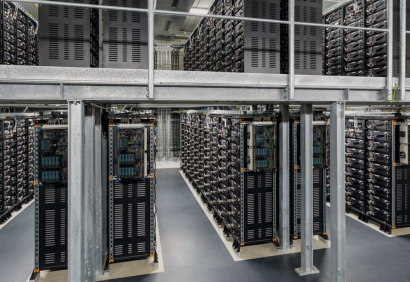Germany leads Europe -- and much of the world -- when it comes to battery storage. Domestic storage-plus-solar continues to boom, thanks in part to incentives from KfW, the state-owned bank.
And according to a recent study, there’s about to be a surge in larger, grid-scale batteries this year. In fact, the Team Consult study claims that there will be a threefold increase, from around 60 megawatts last year to 200 megawatts in 2017.
It’s a big jump. But author Christoph Hankeln thinks his estimate may in fact be on the low side.
“Many actors in the market are making strong business cases for large-scale storage,” he said. “In addition, the investment costs for battery storage continue to fall. Finally, although the payments for the primary stabilization market have fallen from €3,600 (USD $3,852) in 2015 to €2,450 ($2,622) per megawatt, payments are still sufficient for a viable business model providing grid stability.”
That stability is urgently needed as yet more renewables are added to the German grid. According to Hankeln, fees paid to wind operators for curtailing projections when there’s a power glut costs German consumers around €500 million ($535 million) a year.
These conditions have led to a number of grid-scale projects that are already in the pipeline -- including installations from oil and energy company WEMAG and power plant builder and operator STEAG -- with the latter building 75 megawatts in various projects this year alone.
Hankeln pointed out that these old-school energy companies are using their existing access to the German grid in order to benefit from a new revenue model.
Hankeln said his study is highly conservative. At least one more project, of up to 100 megawatts, is likely to become prequalified this year, although he was not able to disclose details on the developer or revenue model.
Whichever way you count it, it looks like 2017 is going to be a banner year for grid-scale battery storage in Germany.
According to a recent report from GTM Research on the German energy storage market through 2021, the country's energy storage market is set to grow elevenfold in megawatt terms between 2015 and 2021. That will amount to a market value of more than $1 billion.
But GTM Research Storage Analyst Brett Simon cautioned that there's still uncertainty for storage as a grid services provider. “My understanding is that the German primary reserve market has been the major driver for utility-scale storage to date, but that the market is expected to saturate in 2017,” he said.
“There are opportunities in the secondary reserve market and for distribution deferral, but it is likely that these sorts of projects wouldn't begin to become viable until 2018 at the earliest, given the need for improved storage economics.”
Hankeln admitted he is “curious” to see if 2017 will be a one-off for grid scale batteries.
Beyond this year, he said, big industrial plants could look to replace diesel uninterruptible power supplies with large battery arrays for backup power and black-start capabilities.
In addition, increasing electric-vehicle adoption will lead to ever-larger stresses on the grid, especially where there is a heavy concentration of charging at the same time.
Hankeln believes this is also an area where “big batteries could find a market.”

